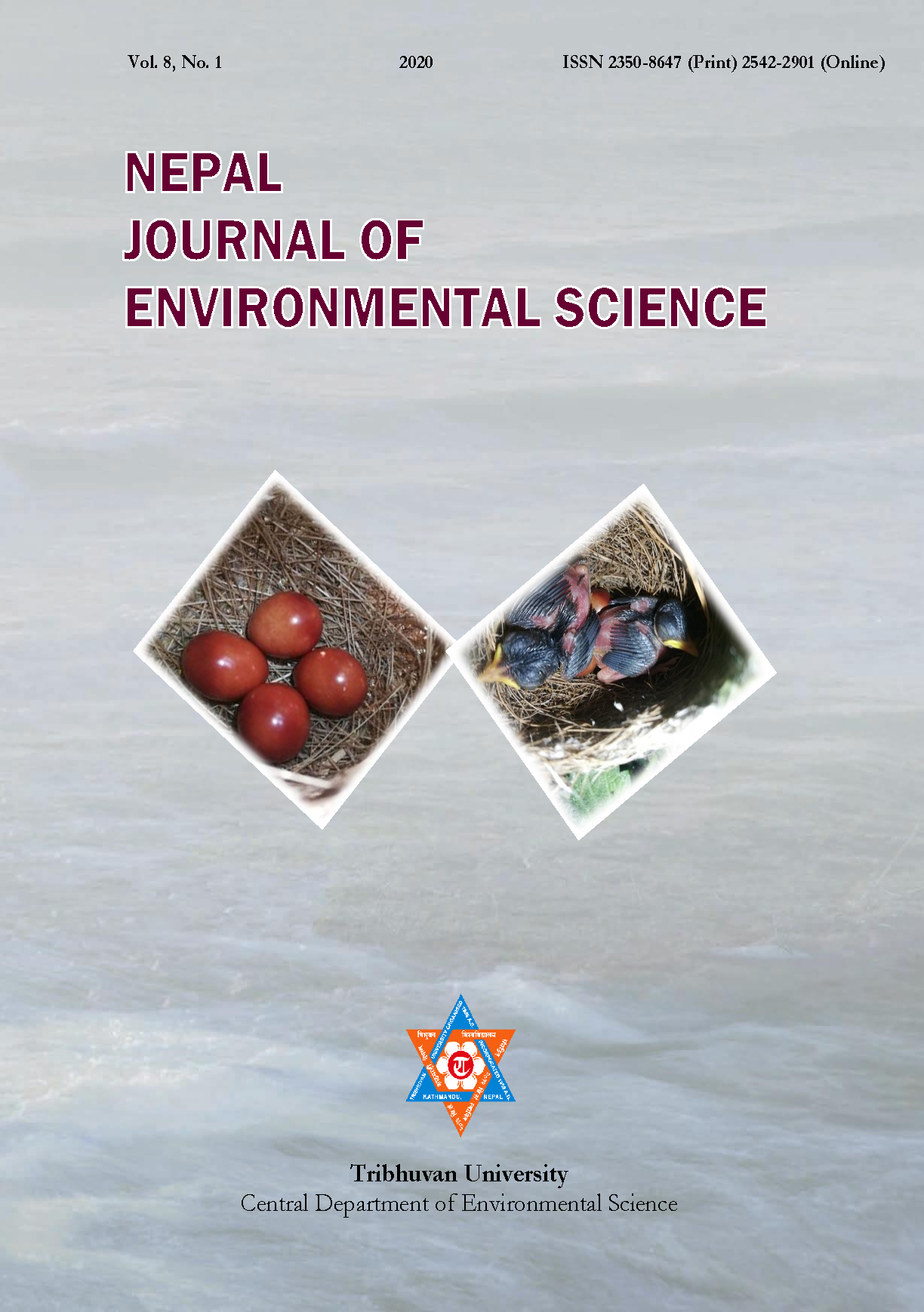Adsorptive removal of Pb(II) ions from aqueous solution by activated carbon prepared from cabbage waste
DOI:
https://doi.org/10.3126/njes.v8i1.34446Keywords:
Activated carbon, adsorption, cabbage waste, isotherm models, leadAbstract
The present study deals with the adsorption of Pb(II) from an aqueous solution on activated carbon obtained from cabbage waste. Such activated carbon was prepared by pyrolysis of cabbage waste powder at 700 °C for 1 hour in three different atmospheres, namely open air (CWAC-O), nitrogen (CWAC-N) and nitrogen with steam (CWWAC-NW). The specific surface areas of thus obtained three types of activated carbons were determined by methylene blue adsorption method and found for CWAC-O, CWAC-N and CWAC-NW as 59, 169 and 310 m2/g, respectively. Due to the highest specific surface area of CWAC-NW, the adsorption of Pb(II) experiments was performed onto CWAC-NW only. The influence of various parameters like pH, adsorbent dose, contact time and different initial concentrations of metal ion on adsorption of Pb(II) were studied. The equilibrium data for adsorption was analyzed by using Langmuir and Freundlich isotherm models. The Langmuir adsorption isotherm model was found the best fit for the experimental data. The maximum adsorption capacity was 54.945 mg/g. Kinetics results were described by a pseudo second order model with the rate constant value 0.055 g/(mg∙min). The main mechanism of the adsorption process was physicochemical adsorption and was not solely intraparticle diffusion.
Downloads
Downloads
Published
How to Cite
Issue
Section
License
This license enables reusers to distribute, remix, adapt, and build upon the material in any medium or format for noncommercial purposes only, and only so long as attribution is given to the creator.




